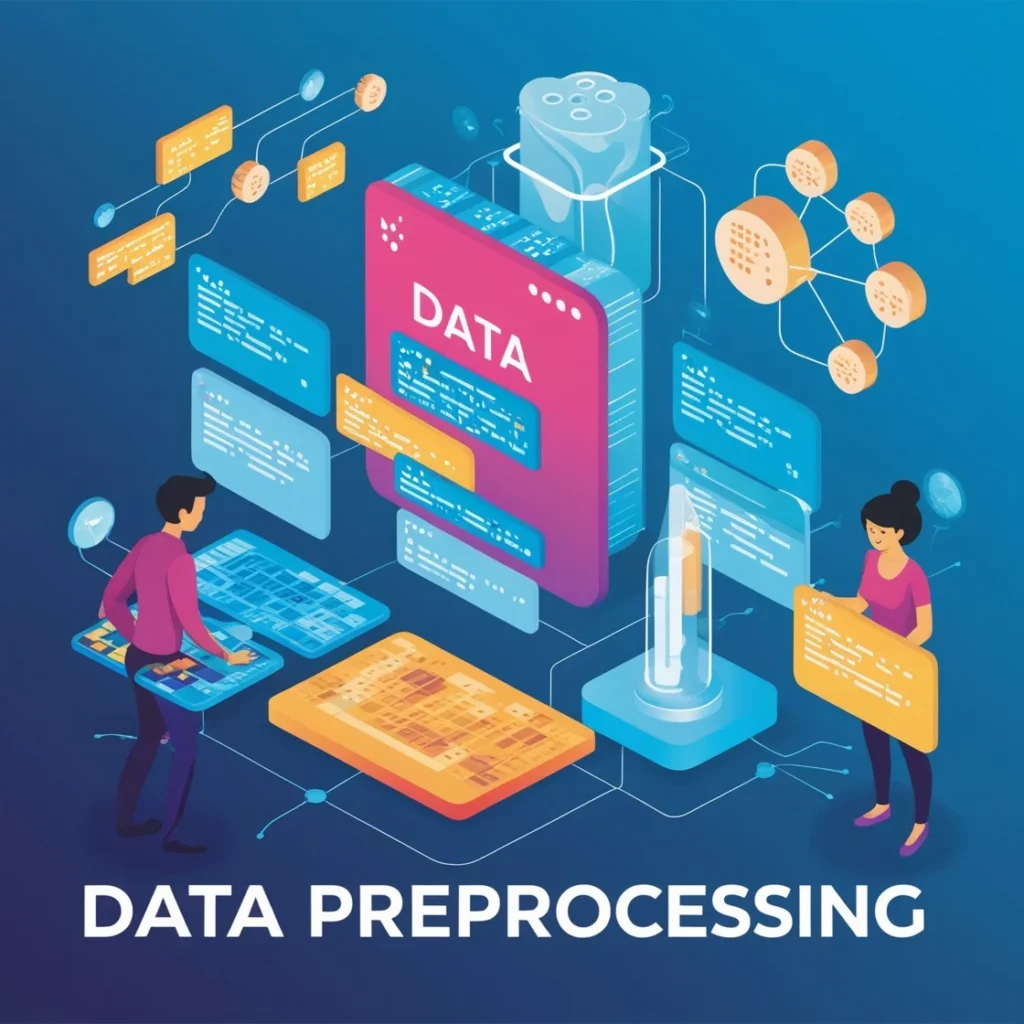What is Data Preprocessing?
Data Preprocessing: an introduction: Data preprocessing is the cornerstone of any successful machine learning or data analysis project. It works with converting unprocessed, raw data into a refined format that machine learning algorithms can understand and utilize for learning. Industry frequently obtains inconsistent, confused, or incomplete real-world data. This makes it unsuitable for direct analysis. Data preprocessing makes the raw data clean, organized in a proper manner to study, and standardized, which helps in making accurate and meaningful results. In our later blogs, we will need datasets to learn more about preprocessing. For that we will use Kaggle, a website that offers various datasets to study.
Why is it important in Industry?
In today’s data-driven world, industries fetch vast amounts of data from various sources such as sensors, transactions, social media, and more. However, the quality of this data is often not immediately useful and understandable. Preprocessing is necessary because:
- Improves Data Quality: Incomplete or inconsistent data in a dataset can lead to inaccuracy in machine learning models and flawed insights. Preprocessing gets rid of these issues by cleaning and organizing the data in a proper arranged manner.
- Reduces Complexity: Often dealing with large datasets, preprocessing helps reduce redundancy and irrelevant information. This makes analysis in the model faster and easier.
- Ensures Consistency Across Systems: Industry often pulls data from various sources. So, a data that has been fetched and processed in a particular country or a region might create issues in units or data consistency. Preprocessing thus makes data standardized and integrated, so as to make it easier to analyze and interpret.
- Saves Time and Resources: By ensuring the data cleaning and transformation processes like standardition, preprocessing minimizes manual labour in finding the units, saving time and resources for industries that handle large volumes of data.
Importance in Machine Learning
Data preprocessing is a important step in machine learning (ML). Algorithms in the model learn patterns from data, but if the input data is of low quality, the model’s predictions will be unreliable and fluctuate often. The key benefits in ML include:
- Prevents Bias: By ensuring that all characteristics are applied evenly to the model, techniques like normalization and standardization help to prevent bias toward variables with wider ranges in the data.
- Boosts Accuracy: By removing inconsistencies from the data, preprocessing makes the models work better. As a result, it makes sure that the algorithm may concentrate on beneficial patterns
- Enhances Model Interpretability: By shortening or removing irrelevant or unimportant data, preprocessing helps machine learning models become more interpretable and efficient in giving results. Therefore, it allows data scientists to better understand the underlying processes and give more efficient results.
Conclusion
Thus we learned that data preprocessing is an important step to enhance data quality, convert it to a compatible format that is good in any place or region while testing, improves model accuracy, and enhances decision-making across industries and machine learning projects. We will learn about in more in detail in our later blogs and our course as well. So, stay tuned at Boardigital!
